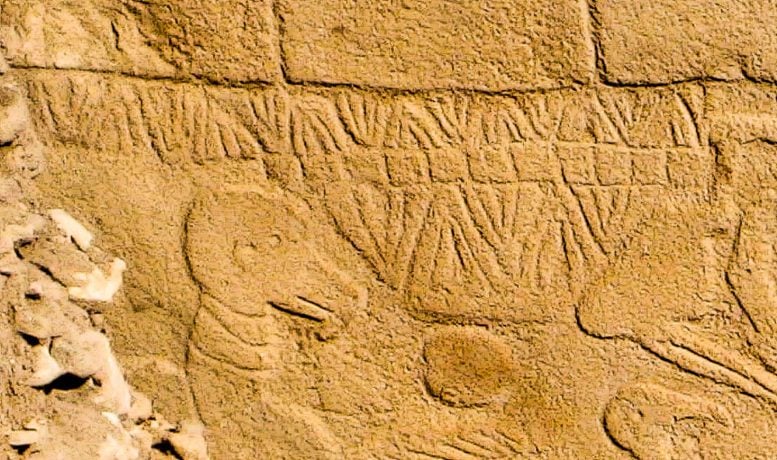
The inscriptions at Gobekli Tepe are believed to represent the oldest calendar in the world. Image credit: Dr Martin Sweetman
Research at the 12,000-year-old site of Gobekli Tepe in Turkey suggests that carvings on ancient columns likely represent the world’s oldest solar calendar, possibly created to commemorate a catastrophic comet strike that may have spurred the development of civilization.
Experts suggest that markings on a stone pillar at a 12,000-year-old archaeological site in Turkey may represent the world’s oldest solar calendar, created to commemorate a devastating comet strike. The researchers believe the markings, found at Gobekli Tepe in southern Turkey—an ancient complex featuring temple-like parapets decorated with intricate carvings—may document an astronomical event that sparked a major shift in human civilization.
Research suggests that the ancients were able to record their observations of the sun, moon and constellations in the form of a solar calendar, created to track time and determine the changing seasons. A new analysis of V-shaped symbols carved into pillars at the site has found that each V could represent a single day. This interpretation allowed researchers to calculate a 365-day solar calendar on one of the pillars, consisting of 12 lunar months plus 11 extra days.
The importance of the solar and lunar calendars
The summer solstice appears to be a separate, special day, represented by a V around the neck of a bird-like beast thought to represent the summer solstice constellation at the time. Other nearby statues, possibly representing deities, have been found with similar V marks on their necks.
Since the carvings depict the cycles of the moon and the sun, these carvings may represent the world’s oldest lunisolar calendar, based on the phases of the moon and the position of the sun – predating other known calendars of this type by several thousand years.
Researchers say the ancients may have made the sculptures at the Gobekli Tepe site to record the date of a swarm of comet fragments hitting Earth nearly 13,000 years ago — or 10,850 B.C.
The comet strike is suggested to have caused a mini ice age that lasted more than 1,200 years, wiping out many Class This may also have caused changes in lifestyle and agriculture, and is thought to be linked to the birth of civilization shortly afterwards in the Fertile Crescent of western Asia.
Photographing astronomical phenomena
Another column at the site appears to depict the Tauride meteor stream – believed to be the source of comet fragments – which lasts for 27 days and emanates from the directions of Aquarius and Pisces.
The discovery also seems to confirm that ancient people were able to record dates using precession—the wobble in the Earth’s axis that affects the movement of the constellations across the sky—at least 10,000 years before the phenomenon was documented by Hipparchus of ancient Greece in 150 B.C.
The sculptures appear to have remained important to the people of Göbekli Tepe for thousands of years, suggesting that the collision event may have led to the emergence of a new cult or religion that influenced the development of the civilization.
This discovery also supports the theory that Earth experiences an increase in comet strikes when its orbit intersects with the path of circular comet fragments, which we typically experience as meteoroid streams.
“The people of Gobekli Tepe appear to have been watching the sky intently, which is to be expected given that their world had been devastated by a comet strike,” said Dr Martin Sweetman, from the University of Edinburgh’s School of Engineering, who led the research. “This event may have sparked the rise of civilisation by creating a new religion and stimulating developments in agriculture to cope with the cold climate. Their attempts to record what they saw may have been the first steps towards the development of writing thousands of years later.”
Reference: “Calendar and Time Representations at Göbekli Tepe and Karahan Tepe Support an Astronomical Interpretation of Their Symbolism” by Martin B. Sweetman, July 24, 2024, Time and Mind.
DOI: 10.1080/1751696X.2024.2373876

“Beer aficionado. Gamer. Alcohol fanatic. Evil food trailblazer. Avid bacon maven.”
